How to Grow & Care for Verbena Plants
Written by Iris
Dec 15 2022
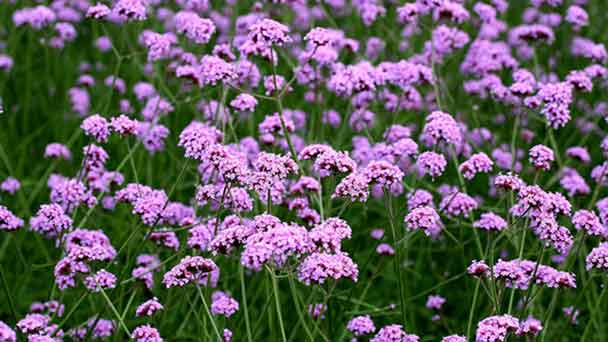
Verbena plant is a long-blooming annual or perennial flower with heat resistance and an extremely long flowering season. Many perennials have a relatively short life span, but they make up for it with vigor and exuberant flowering. They also grow well as annual flowering plants because they bloom quickly in the first season after planting. Annual verbena grown from seed does not perform well in hot, humid climates, while most perennial or asexual verbena grows well in south Carolina's high temperatures and humidity. Verbena plant is a magnet for butterflies and pollinators, and a great way to add color and structure to your garden. These plants are also easy to grow.
Also Read: 15 Low Maintenance Outdoor Plants
Growing from seed is also pleasingly easy. Fill trays with fresh, general-purpose soil.
If you are trying to grow verbena in a colder weather, or during the winter, try sowing in seed trays with germinations lids, such as the Soligt Growing Trays with Humidity Domes. These help you to regulate the temperature and humidity levels around the seeds, encouraging quicker germination.
Sprinkle the seeds over the soil. Cover your seeds with a thin layer, about half an inch thick, of fresh soil. Gently spray with water and place in a sheltered light position to germinate. Keep the soil damp.
Following germination, allow the seedlings to grow on. Once they are large enough to handle, thin out the seedlings before transplanting into individual containers. (Read more: How To Harvest Verbena?)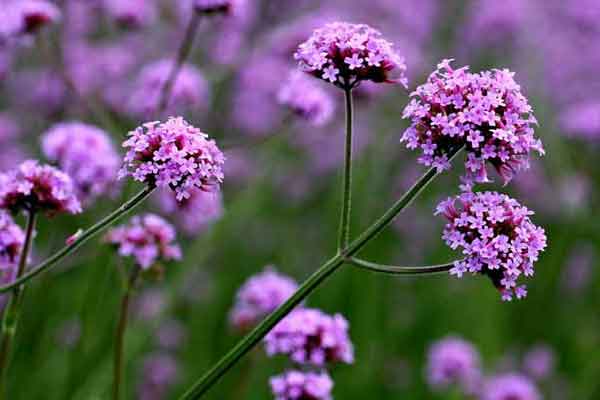
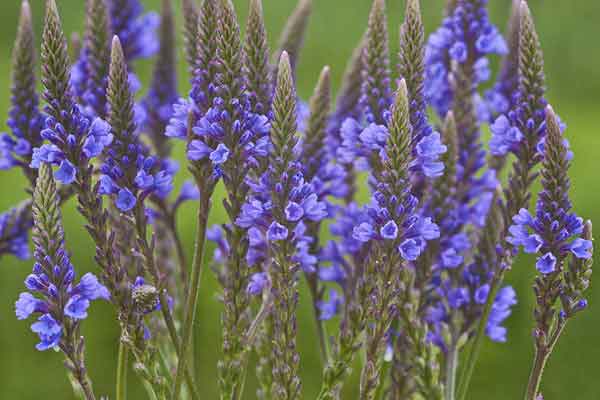
Its dense texture also can't allow nutrients to reach the roots. Instead, use standard potting soil and amend it with leaf mold to make it a bit lighter. You also want to make sure the ground has an acidic pH before planting. Perennials also do well in organic mulch, so throw in a layer that's at least two or three inches thick. Sandy soil tends to drain moisture at a rapid pace but isn't the best when it comes to retaining nutrients, so mulching would be a perfect idea, primarily if your Verbena type is growing outdoors for landscaping. After making all the suitable amendments, it's best to run a soil test to tell which essential nutrients are missing.
Apart from chemical remedies, you can use insecticidal soap or neem oil to treat the affected areas. Some of the pests you might deal with include spider mites, snails, slugs, thrips, and aphids. A natural remedy for getting rid of these bugs is diatomaceous earth. Compared to chemical options, bugs find it hard to form a resistance against this chalk-like substance.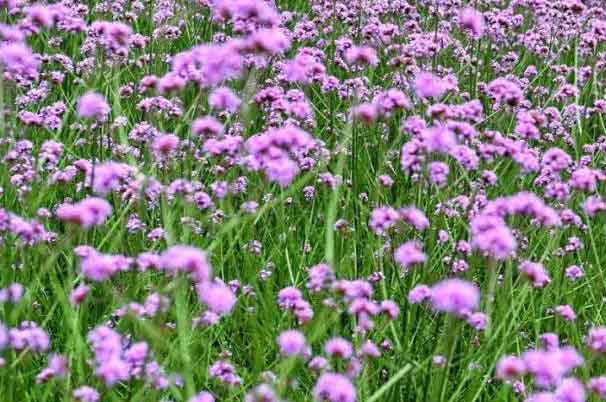
'Lanai Royal Purple with Eye' (Verbena x hybrida 'Lanai Royal Purple with Eye' is a cultivar with bright purple flowers and contrasting white eyes.
'Texas Rose' (Verbena x hybrida ‘Texas Rose’) is a cultivar that bears reddish-pink flowers. (Find more fall plants here.)
'Blue Princess' (Verbena x hybrida ‘Blue Princess’) is a newer hybrid variety of verbena that produces beautiful deep blue flowers.
Superbina’" series is bred to resist powdery mildew and it sometimes becomes a short-lived perennial as far north as zone 7. Flowers are white or shades of lavender.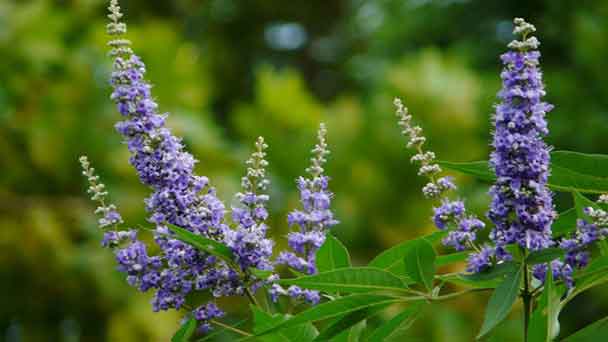
Read Next:
Is Verbena Toxic to Dogs?
How To Deadhead Verbena?
Top 30 Fall Flowers to Plant - Beautiful Autumn Flowers
30 Fall Plants for a Beautiful Fall Garden
| Botanical Name | Verbena x hybrida |
| Common Names | Verbena plant, annual verbena |
| Plant Type | Herbaceous perennial, usually grown as an annual |
| Light Requirements | Full sun |
| Soil Requirements | well-drained soil |
| Bloom Time | Spring to fall (Read More: 26 Best Autumn Flowers) |
| Flower Color | bright purple, reddish-pink, deep blue, etc. |
When to Grow Verbena PlantHow to Grow Verbena PlantGrow Verbena Plant from SeedsGrow Verbena Plant from Stem CuttingsHow to Care for Verbena PlantVerbena Plant Light RequirementsVerbena Plant Soil CareVerbena Plant WateringVerbena Plant Temperature & Humidity CareVerbena Plant Fertilizer Verbena Plant PruningVerbena Plant Pests & Diseases CareVarieties of Verbena PlantVerbena Plant FAQWhy is My Verbena Plant not Blooming?Why is My Verbena Plant Wilting?Why are my Verbena Plant Leaves Turning White?
When to Grow Verbena Plant
Verbena flower blooms quickly after planting, so the best time to plant verbena is in early spring, March or early April. In coastal areas with moderate temperatures, verbena may also be planted summer or fall. And verbena plant is also a kind of low-maintenance outdoor flower.Also Read: 15 Low Maintenance Outdoor Plants
How to Grow Verbena Plant
Grow Verbena Plant from Seeds
While you can purchase young plants from garden or DIY stores, growing Verbena from seed is more affordable and often allows you a greater choice of varieties.Growing from seed is also pleasingly easy. Fill trays with fresh, general-purpose soil.
If you are trying to grow verbena in a colder weather, or during the winter, try sowing in seed trays with germinations lids, such as the Soligt Growing Trays with Humidity Domes. These help you to regulate the temperature and humidity levels around the seeds, encouraging quicker germination.
Sprinkle the seeds over the soil. Cover your seeds with a thin layer, about half an inch thick, of fresh soil. Gently spray with water and place in a sheltered light position to germinate. Keep the soil damp.
Following germination, allow the seedlings to grow on. Once they are large enough to handle, thin out the seedlings before transplanting into individual containers. (Read more: How To Harvest Verbena?)

Grow Verbena Plant from Stem Cuttings
Verbena plant propagation from cuttings is best done in late spring. This is when your verbena plants are most likely to root. Cuttings can also be taken during the summer months. These are often more robust but are slower to root. (Read more about Verbena Plant Propagation Methods.)- Using a sterilized pair of scissors or knife, cut a few stem cuttings from the parent Verbena plant.
- You want to make sure they are at least three inches long.
- Get rid of any lower leaves on each stem cutting.
- Prepare the seed starter mix when growing outdoors or potting soil if you’re growing them inside hanging baskets.
- Dig the planting holes at least 3 or 4 inches deep.
- Moisten the soil but be careful not to overwater the cuttings.
- If you’re planning to grow verbena cuttings indoors, cover the container using a plastic bag to help retain moisture.
- Within a few weeks, new growth should emerge. The roots will also have found, so you need to transplant the cuttings into bigger pots.
- Once two or three leaves are formed, move the containers of those so the plant can harden.
- Place the growing medium somewhere with enough bright light.

How to Care for Verbena Plant
Verbena Plant Light Requirements
Plant verbena in full sun. Flowering will be much reduced in shady locations. This is a plant that requires eight to 10 hours of sun daily. (Read more about Verbena Plant light need.)Verbena Plant Soil Care
Most Verbena plants commonly grown in households aren't fussy about their soil requirements. They generally need a soil texture that drains water efficiently and doesn't hold too much moisture. It should, however, retain some to help the Verbena plant have thicker and healthier roots. When growing outdoors, you want to space them out at least 10 inches apart and amend the nursery bed with compost manure, to enhance moisture retention and make the soil nutrient-rich. Avoid using clay soil since it doesn’t let water pass through with ease, leading to Verbena plant root rot.Its dense texture also can't allow nutrients to reach the roots. Instead, use standard potting soil and amend it with leaf mold to make it a bit lighter. You also want to make sure the ground has an acidic pH before planting. Perennials also do well in organic mulch, so throw in a layer that's at least two or three inches thick. Sandy soil tends to drain moisture at a rapid pace but isn't the best when it comes to retaining nutrients, so mulching would be a perfect idea, primarily if your Verbena type is growing outdoors for landscaping. After making all the suitable amendments, it's best to run a soil test to tell which essential nutrients are missing.
Verbena Plant Watering
Verbena plants are largely drought-resistant. Regularly watering verbena plants encourages more flowers to form. Apply about an inch of water every week to the base of the plant. Remember, plants in containers require more frequent watering than those in beds or borders. Harvesting rainwater is a great way to keep plants hydrated without running up a large water bill. While the plants can survive in dry conditions they do benefit from regular watering. Drought-stressed or thirsty plants can struggle to thrive. They may also become a target for pests such as spider mites. These plants struggle in wet or boggy soil. Plants in wet positions are also more likely to succumb to diseases such as botrytis blight.Verbena Plant Temperature & Humidity Care
Planted as annuals hybrid verbenas perform suitably in virtually any climate, but may decline in the hottest period of the summer.Verbena Plant Fertilizer
In garden beds, adding a continuous-release fertilizer and enriching the soil with organic matter at the time of planting will usually be sufficient. Otherwise, fertilize container-grown plants regularly with a water-soluble fertilizer.Verbena Plant Pruning
In the fall you can trim verbena plants lightly to give a neater appearance to the garden, but do not cut severely until spring as new growth begins to appear. Overly severe fall pruning can reduce cold hardiness and plants may not survive a cold winter. Most verbena plants are short-lived, so you should plan on replacing them after two or three years. However, some species can re-seed and naturalize in the garden.Verbena Plant Pests & Diseases Care
Most Verbena perennials and annuals are prone to the effects of improper care - overwatering. Soil that remains soggy for too long causes the roots to rot, and some other adverse effects include powdery mildew forming on the leaves and blooms. If you spot any powdery mildew, then it could be a result of a fungal infection that spreads in microscopic spores.Apart from chemical remedies, you can use insecticidal soap or neem oil to treat the affected areas. Some of the pests you might deal with include spider mites, snails, slugs, thrips, and aphids. A natural remedy for getting rid of these bugs is diatomaceous earth. Compared to chemical options, bugs find it hard to form a resistance against this chalk-like substance.

Varieties of Verbena Plant
The various varieties of hybrid verbena are usually identified by their unique flower colors. There are notable selections:'Lanai Royal Purple with Eye' (Verbena x hybrida 'Lanai Royal Purple with Eye' is a cultivar with bright purple flowers and contrasting white eyes.
'Texas Rose' (Verbena x hybrida ‘Texas Rose’) is a cultivar that bears reddish-pink flowers. (Find more fall plants here.)
'Blue Princess' (Verbena x hybrida ‘Blue Princess’) is a newer hybrid variety of verbena that produces beautiful deep blue flowers.
Superbina’" series is bred to resist powdery mildew and it sometimes becomes a short-lived perennial as far north as zone 7. Flowers are white or shades of lavender.

Verbena Plant FAQ
Why is My Verbena Plant not Blooming?
This might be because it is not getting enough sunshine – six hours a day is ideal. So, move the verbena plant to ensure it is in the brightest possible spot. Also, trimming verbena might well spark it into new growth if the flowering has slowed down.Why is My Verbena Plant Wilting?
Verbena plants often wilt because they are too dry or too wet, so make sure you have the watering regime just right. Some fungal diseases can also cause wilting, so ensure good hygiene and air circulation.Why are my Verbena Plant Leaves Turning White?
This is likely to be caused by powdery mildew, a fungal disease that leaves white deposits on the surface of the leaf. Make sure that the roots rather than the leaves are watered to avoid this problem and ensure plenty of ventilation if growing verbena indoors. It is best to remove affected leaves to stop them from spreading.Read Next:
Is Verbena Toxic to Dogs?
How To Deadhead Verbena?
Top 30 Fall Flowers to Plant - Beautiful Autumn Flowers
30 Fall Plants for a Beautiful Fall Garden
Latest Updated
- Benefits of Bugleweed - 7 Science-backed Health Benefits
- Bugleweed Dangers & Side Effects - Is It Poisonous?
- How to Plant Evergreen Trees - What You Should Know
- When to Plant Evergreens - Grow Guide for Evergreen Trees
- 12 Wonderful Evergreen Shrubs for Your Garden
- 12 Popular Evergreen Plants with Pictures for Beginners
- When And How To Prune A Lilac Bush Like a Pro
- How to Grow & Care for Lilac Vine (Hardenbergia Violacea)
- Japanese Lilac Tree (Syringa Reticulata) Care & Propagation Guide
- Shumard Oak Pros and Cons - What to Know
Popular Articles
- Winter maintenance of Antirrhinum Majus
- How to Grow Terminalia Mantaly Tree
- How to Grow and Care for Crossostephium Chinense
- How to grow Antirrhinum Majus in spring
- Peristeria Elata (Dove Orchid) Profile: Info & Care Guide
- Underwatered Snake Plant (Sansevieria Trifasciata) - Signs And How To Fix
- How to Care for Brazilian Jasmine Plant (Mandevilla Sanderi)
- How to Grow & Care for Graptopetalum Purple Delight in Summer
- Rosa Chinensis (China Rose): Plant Growing & Care Tips
- How to Care for Baby Sun Rose (Aptenia Cordifolia)